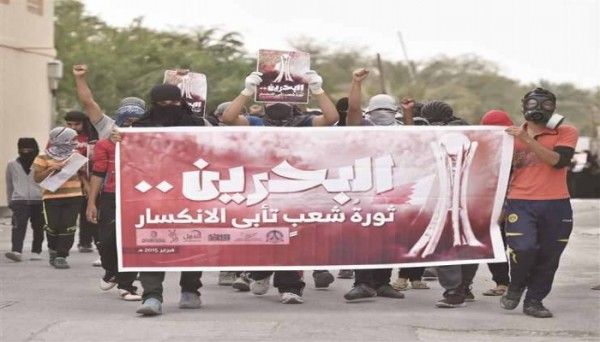ACLED Publishes New Data about Bahrain Events until 2020

2020-03-24 - 9:00 p
Bahrain Mirror: The Armed Conflict Location & Event Data Project (ACLED) published on its website the data it gathered about Bahrain's events from 2016 to 2020.
In total, ACLED now records approximately 9,000 events in Bahrain from January 2016 to March 2020. Demonstration events account for 99% of all disorder in the country, with the remaining 1% consisting of violence against civilians, predominantly perpetrated by state forces; rare clashes between the authorities and anti-government militia groups, such as Saraya Al Ashtar; and sporadic bomb attacks. More than 20 fatalities are reported between 2016 and early 2020.
At the height of the Arab Spring in February 2011, a mass protest movement took to the streets in Bahrain calling for democratic reforms, human rights protections, and an end to corruption. Nine years ago this month, the Bahraini government, backed by a contingent of Saudi and Emirati security forces, declared a state of emergency and launched a violent crackdown, destroying the site of the main protest encampment and the symbol of the movement at Manama's Pearl Roundabout. The authorities killed dozens of protesters and arrested hundreds of activists, critics, and religious leaders, dissolving opposition political groups and closing all independent media outlets.
Nearly a decade later, new data confirm that despite severe restrictions on free press, expression, and assembly, hundreds of protests and riots continue across the country every year. To address coverage gaps left by pervasive censorship, ACLED has completed supplemental data collection drawing on information from over 20 ‘new media' sources. ‘New media' (e.g. Twitter, Telegram, WhatsApp) can be a powerful supplemental source, but vary widely in terms of quality. As a result, ACLED does not crowdsource or scrape large amounts of social media, but instead takes a targeted approach to the inclusion of new media through the establishment of direct relationships with each source or the verification of the quality of each source.1 This new supplementation adds more than 7,000 events to the Bahrain dataset, capturing a range of disorder from the beginning of coverage in 2016 to the present.
Peaceful protests account for the majority of the newly added events, with over 4,400 recorded since 2016. More than 140 of these events faced some form of intervention, such as police firing teargas or detaining activists. Nearly 2,600 new events are riots, with more than 1,800 violent demonstration events and over 700 cases of mob violence.
Though the government does not release demographic information, Shiites are believed to make up 55% to 70% of Bahrain's citizen population (CEIP, February 2019; Pew Research Center). Despite accounting for a majority, the Shiite community is marginalized and faces discrimination by the government, which is dominated by the Sunni royal family (CEIP, February 2019). Attacks on Shiite activists, clerics, and leaders in Bahrain and neighboring Saudi Arabia regularly trigger large demonstrations.
The data show spikes in demonstration activity around executions and extrajudicial killings committed by the government. In January 2017, demonstrations surged after the authorities executed three Shiite men charged with a deadly attack on security forces in 2014, despite allegations that the prisoners were tortured and convicted in an unfair trial. Mass protests broke out again in February 2017 after security forces killed three escaped prisoners, coinciding with the anniversary of the 2011 uprising. And in May 2017, five protesters were killed in a police raid on a sit-in outside the home of a prominent religious leader in Diraz, triggering another wave of demonstrations. With more than 80 demonstration events already recorded through mid-March, Bahrain is likely to face continued unrest well into 2020.
- 2024-07-10Bahraini Authorities Summon Head of Sanabis Ma'tam, Threaten "Actions" Due to Mourners' Chants Against Israeli Occupation
- 2024-07-10Political Prisoner Mohammad Al-Raml's Family Say He's Vomiting Blood Due to Poor Conditions, Fear for His Life
- 2024-07-09Ali Al-Majed Arrested After His Return to Bahrain
- 2024-07-08Yusuf Al-Muhafdha: Convicted Returnees to Bahrain Have the Right to a Lawyer, Retrial, and Legal Guarantees
- 2024-07-08Reciter Mahdi Sahwan: Head of Manama Police Informed Me of Ban on Reciters Traveling to Commemorate Ashura